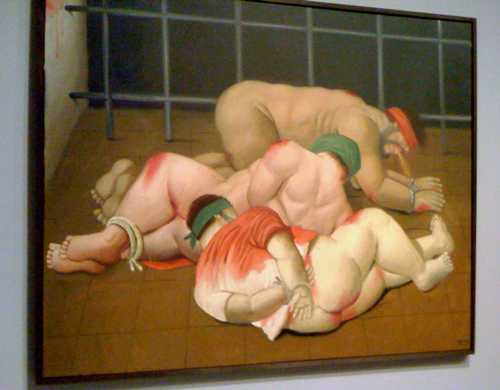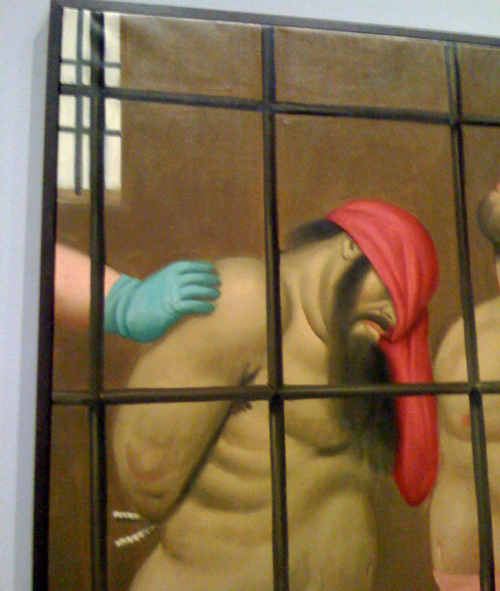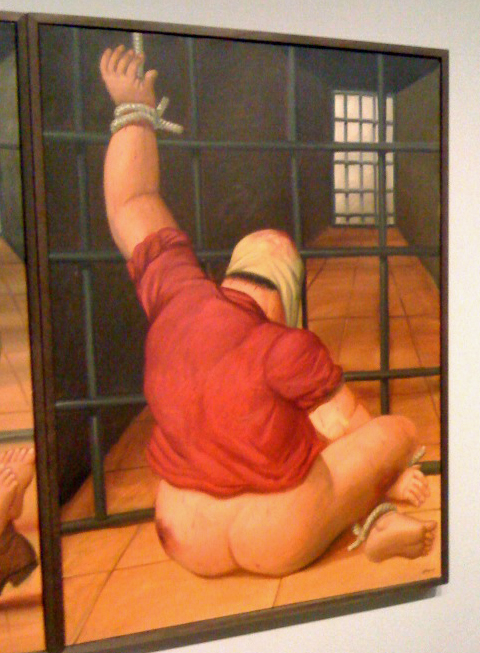
Even the New York Times has said it: by adopting the Bush regime's arguments for curtailing legal processes and transparency about government actions in the name of "security," we're now well into the era of "President Barack Obama’s cover-up." It's not that we don't know that the rule of law has been bent beyond breaking through process-devoid renditions and torture, through dragnet National Security Agency surveillance of the planet, and through targeted killings of a list of "enemies." The cover up means that our government is actively working to obscure the truth about its law-breaking in order to protect past perpetrators and retain the freedom to practice new abuses at its discretion. Some moves away from this lawlessness have been made, including the decision to prosecute for their crimes some of the Guantanamo prisoners. But overall, Obama's administration seems more attached to protecting those who occupied their seats before them than in restoring the rule of law.
Adam Server reported another aspect of the cover-up at TAPPED.
They don't want us to see what was done (is being done?) -- we might be revolted and revolt?On Friday, Secretary of Defense Bob Gates used his newly granted authority to exempt photos of detainee abuse from Freedom of Information Act requests to block the release of several photographs that are the subject of a Freedom of Information Act lawsuit from the ACLU. The White House-supported amendment granting the secretary of defense this authority was added to the Homeland Security Appropriations bill by Sen. Joe Lieberman.
Hiding the visual evidence is not a new practice for U.S. governments. When the U.S. dropped the first nuclear bombs on Japan, General Douglas MacArthur made it one of his priorities to prevent publication of photos that documented the results. Last summer, Hugh Gusterson of George Mason University wrote about the consequences in the Bulletin of the Atomic Scientists:
I believe Gusterson is right about this.General MacArthur was surely correct that the publication of pictures from Hiroshima would have incited criticism of the United States and nuclear weapons. ... The resulting naïveté about the physical effects of nuclear weapons deformed public debates about nuclear weapons policy in the years after World War II just as our ignorance today about the full range of detainee abuse in Iraq is inhibiting a fully candid and informed debate about that war.
If past is prologue, we will, one day, see the pictures Obama has kept from us, just as we eventually came to see the grainy black-and-white images of unspeakable suffering from Hiroshima and Nagasaki. He can delay--but he cannot prevent--the materialization of this visual truth.

Meanwhile, our images of prisoner abuse are shaped by the few pictures that have emerged, mediated through the imaginative response we inevitably make to these phantasms of horror. In that connection, Fernando Botero's paintings, the fifty-six images of The Abu Ghraib Series on display at the UC Berkeley Art Museum until February 7 are probably the best known.
The Columbian artist read Seymour Hersh's reporting on Abu Ghraib and just started drawing. Quite obviously, his vision arises not only from the Iraq experience, but also from the Latin American awareness of the many torturers sent forth to abuse for so many years from the U.S. School of the Americas.
In 2007 Botero gave an interview about why we visualize to San Francisco Chronicle art critic Kenneth Baker:
The lousy cell phone photos interspersed here give some sense of the exhibit. But if you have a chance, go see for yourself wherever the Abu Ghraib series turns up next."Art is important in time," he said. "It brings some kind of reflection to the matter. We have analyzed this thing from editorial pages and books, but somehow this vision by an artist completes what happened. He can make visible what's invisible, what cannot be photographed. In a photo, you just do a click, but in art you have to put in so much energy. This concentration of energy and attention says something that other media cannot say."
Call it faith in painting. Most painters I know voice it in some terms. But once a painter ventures into territory as painful as making torture a pictorial theme, how does he know when to stop?
"One day, I didn't have anything more to say," Botero said. "You feel kind of empty and kind of quiet. You've taken out all your anger and your frustration."
What remains is the conviction of having done a right and necessary thing.
"Art is important," Botero said, "because when people start to forget, art reminds them what happened. Like 'Guernica.' People would not remember the tragedy of Guernica today if it were not for that painting."

1 comment:
They're actually pretty good cellphone photos. Are you allowed to take photographs at the exhibit? If so, I think it's time for a pilgrimage to Berkeley.
Botero really is a major artist, and the fact is he spent a number of years of his life creating these horrific paintings and then essentially giving them away to whoever in the United States would promise to display them. Thanks for this post on all kinds of levels.
Post a Comment